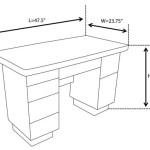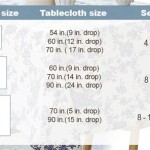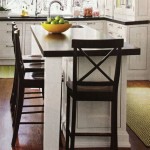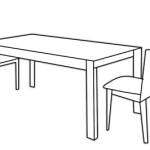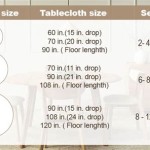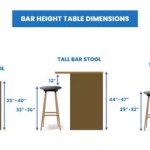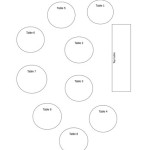Mid-Century Modern Tablescapes: A Timeless Fusion of Style and Functionality
The Mid-Century Modern design movement, spanning roughly from the 1930s to the 1960s, continues to resonate with contemporary audiences, its influence permeating every aspect of interior design. The movement’s core principles – clean lines, organic forms, and functionality – are readily applied to the art of tablescaping, resulting in dynamic and aesthetically pleasing settings.
A Mid-Century Modern tablescape is more than just a collection of decorative objects; it's a carefully curated expression of style and functionality. The goal is to create a harmonious balance between minimalist elegance and a welcoming warmth, reflecting the essential values of the era. This style embraces a sense of openness and space, promoting conversation and connection amongst guests.
Key Elements of a Mid-Century Modern Tablescape
1. Organic and Sculptural Forms
Mid-Century Modern design emphasizes natural forms and materials. Tablescapes in this style often feature circular or oval tables, wooden chairs with organic curves, and sculptural elements. This approach brings a sense of fluidity and movement to the setting, contrasting against the clean lines of the era.
Consider incorporating natural materials like wood, bamboo, or stone into your tablescape. Think about using vases of varying heights and shapes filled with simple yet elegant floral arrangements. Sculptures made of metal or wood, preferably with organic shapes, can add a touch of artistry and sophistication.
2. A Focus on Simplicity and Functionality
Mid-Century Modern design advocates for functionality without sacrificing aesthetics. Simplicity reigns supreme, with a focus on clean lines and minimal embellishments. This principle translates seamlessly to tablescaping, where the emphasis is on practical and elegant tableware. The goal is to create a visually appealing setting without overwhelming the space with excessive details.
Choose simple and elegant dinnerware and flatware with clean lines and a minimalist aesthetic. Avoid overly ornate or intricate pieces that could distract from the overall design. Focus on functionality, selecting pieces that are both beautiful and practical for everyday use. Mid-Century Modern design embraces the idea that form follows function, meaning that the design of an object should be dictated by its intended use.
3. Use of a Limited Color Palette
Mid-Century Modern favored earthy tones and muted hues, drawing inspiration from nature. Tablescapes in this style often incorporate a limited color palette centered around neutrals such as black, white, beige, and gray. These colors provide a clean and sophisticated backdrop for the other elements of the tablescape.
Consider incorporating pops of color through accents like napkins, centerpieces, or candles. A single bright hue can add a touch of vibrancy to an otherwise muted palette. Opt for colors that complement the overall design and add a sense of harmony to the space. Remember, the goal is to create a balanced and harmonious aesthetic, not to overwhelm the senses with excessive color.
4. Textural Contrasts
Mid-Century Modern design embraces textural contrasts, creating visual interest and depth within the tablescape. The clean lines of the furniture and tableware are often paired with textures like woven placemats, crocheted runners, or natural fibers like linen. These contrasting textures add visual variety and enhance the richness of the design.
Experiment with different textures to create layers and interest within your tablescape. A smooth wooden table can be enhanced by a woven placemat, while a sleek centerpiece can be juxtaposed with a rough-hewn vase of flowers. The interplay of textures adds depth and dimension to the setting, creating an experience beyond the visual.
5. Strategic Lighting
Lighting plays a crucial role in setting the mood and ambiance of any space. Mid-Century Modern design emphasizes natural light, often incorporating large windows to flood rooms with sunlight. However, for evening gatherings, strategic lighting is key to creating the desired atmosphere.
Consider using a combination of ambient and task lighting. Ambient lighting, like overhead pendants or lamps, provides general illumination while task lighting, such as candles or small lamps, creates a warm and inviting atmosphere. Remember to select light sources that complement the overall design scheme and create a cohesive and harmonious ambiance.
This approach to design is about more than just aesthetics; it's about creating a space that fosters connection, comfort, and a sense of timelessness. A Mid-Century Modern tablescape is an invitation to slow down, savor the moment, and appreciate the simple beauty of design. By embracing the core values of the movement – functionality, simplicity, and natural forms – one can create a tablescape that is both stylish and inviting, a testament to the enduring appeal of Mid-Century Modern design.

Hosting 101 2 Mid Century Table Setting Ideas Atomic Ranch

Hosting 101 2 Mid Century Table Setting Ideas Atomic Ranch

Mid Century Modern Table Setting For 6 Sarah Urban
.jpg?strip=all)
How To Style A Modern Thanksgiving Tablescape
.jpg?strip=all)
How To Style A Modern Thanksgiving Tablescape
.jpg?strip=all)
How To Style A Modern Thanksgiving Tablescape

Hosting 101 2 Mid Century Table Setting Ideas Atomic Ranch

It S A Dark And Moody Holiday Tablescape Emily Henderson

My Modern Organic Holiday Tablescape Sunny Circle Studio Farmhouse Dining Room Inspiration Furniture

50 Incredible Dining Room Design Ideas Mid Century Decor
Related Posts

